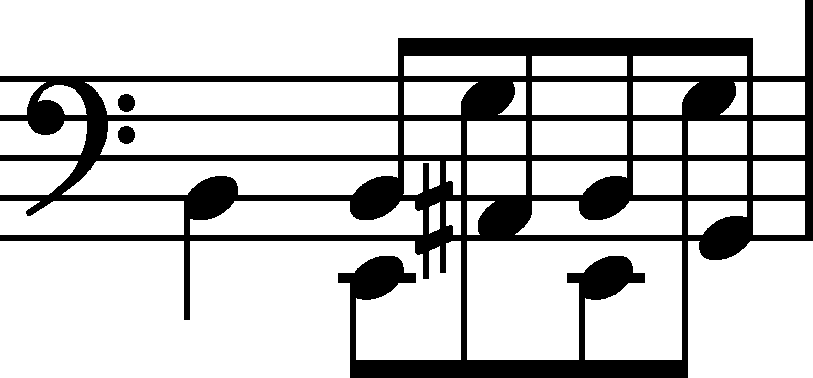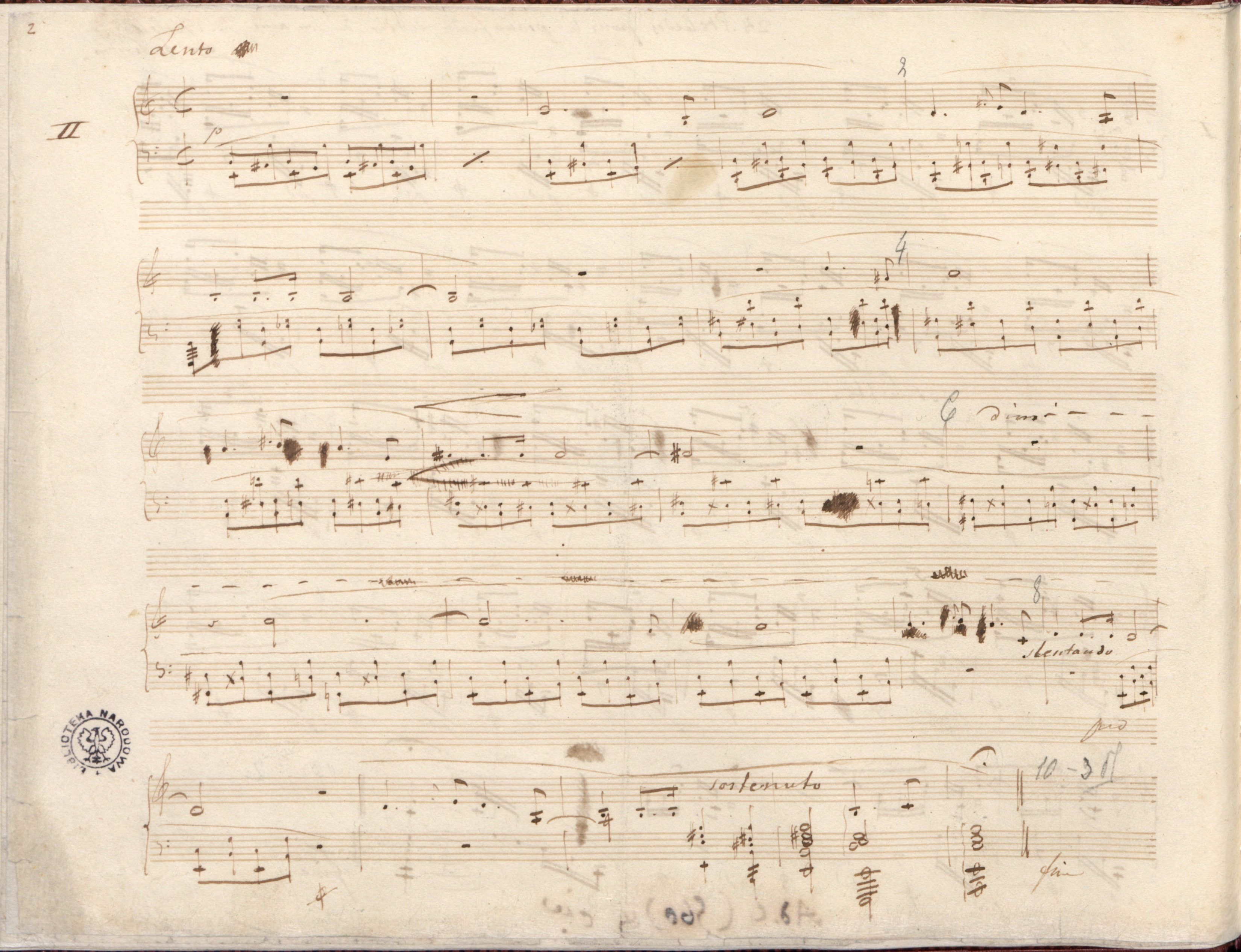Op. 2, Variations in B♭ major
Op. 10, 12 Etudes
Op. 11, Concerto in E minor
Op. 21, Concerto in F minor
Op. 22, Polonaise in E♭ major
Op. 24, 4 Mazurkas
Op. 25, 12 Etudes
Op. 26, 2 Polonaises
Op. 27, 2 Nocturnes
Op. 28, 24 Preludes
Op. 30, 4 Mazurkas
Op. 35, Sonata in B♭ minor
Op. 50, 3 Mazurkas
Op. 63, 3 Mazurkas
Op. 64, 3 Waltzes
(Op. 4), Sonata in C minor




Op. 28 No. 2, Prelude in A minor
In As the L.H. part is written out with notes only in b. 1. Its repetition as b. 2 is marked with a slur over the notes, whereas b. 3 features a conventional / mark. In spite of the fact that Chopin would frequently reach for the aforementioned manners (a slur as a repeat mark, complemented by bis, can be seen in, e.g. Lento con gran espressione WN37, b. 3-4), their appearance next to each other in one manuscript is unique. The reason was probably the change of concept of the first bar of the introduction, which is confirmed by crossings-out. In the continuously written first phrase (b. 1-7), b. 1 differed from b. 2:  (possible interpretation).
(possible interpretation).
Then, however, Chopin crossed out the first bar. Having been devoid of space to write out a new version thereof, he resorted to an abbreviation that did not require any entry between the already written down text.
In A (→FC) Chopin marked b. 2 with a •/• symbol and replaced the second half of b. 3 with the same mark. He could not replace entire b. 3 with an abbreviation, since, starting from that bar, the composer simplified the notation of figuration.
Compare the passage in the sources »
category imprint: Differences between sources; Corrections & alterations; Source & stylistic information
issues: Abbreviated notation of A
notation: Shorthand & other

